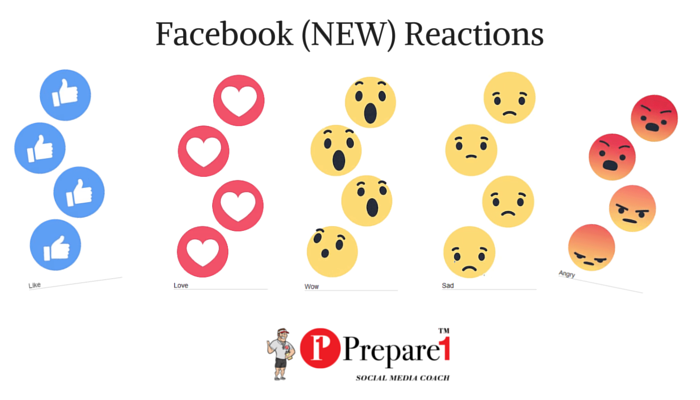
Are you ready for another Facebook change?
Do you still approve of the LIKE button?
Late last year, the company announced Facebook Reactions as a Like button alternative that comes in the form of six emoji with the following sentiments: angry, sad, wow, haha, yay and love. While the effort was first tested in Spain and Ireland, and then trickled it out to Chile, the Philippines, Portugal and Colombia, Reactions is finally headed to the U.S. and the rest of the world in the “next few weeks,” according to a Bloomberg report.
The company has revealed its final list of ‘reaction buttons’
Facebook users have been crying out for a “Dislike” button since, probably, the Like button was introduced. They aren’t going to get it, but Facebook announced last year that it’s been working on a way to make the Like button more expressive: it’s adding in a number of other options.
REACTIONS
Facebook users worldwide will soon have more options than the Like button to choose from when responding to posts on the site.
Chris Cox is the social networks chief product officer. Chris came up with this bold idea at a meeting last year fighting to change the LIKE button. CEO Mark Zuckerburg finally relented to the change giving Chris total leeway to move forward.
The solution would eventually be named Reactions.
Cox’s team manages the News Feed, that endless scroll of Facebook updates. Invisible formulas govern what stories users see as they scroll, weighing baby pictures against political outrage. “Chris is the voice for the user,” says Bret Taylor, Facebook’s former chief technology officer. “He’s the guy in the room with Zuckerberg explaining how people might react to a change.”
After four months of testing outside the U.S., Facebook CEO Mark Zuckerberg says five new emotions will be added to the social network throughout the world “pretty soon.”
Facebook in order to be sensitive to people’s emotions, they worked closely with sociologists to select images that carefully express certain emotions. In addition to offering reactions that may be more appropriate to use in certain situations — i.e. if a Facebook user’s friend or loved one died, the Like button was the only option to express non-verbal emotion — the company wanted to provide images people would feel comfortable and eager to use.
Facebook users have been crying out for a “Dislike” button since, probably, the Like button was introduced. They aren’t going to get it, but Facebook announced last year that it’s been working on a way to make the Like button more expressive: it’s adding in a number of other options — love, haha, wow, sad, and angry — which you’ll be able to press in addition to Like. The Yay button is being removed because most people do not know what that means around the world.

Image: Facebook
LIKE BUTTON
Brands, publishers, and individuals constantly, and strategically, share the things they think will get the most likes. It’s the driver of social activity. People post perfectly posed selfies, proving they’re cool or adventurous or in love; a news organization offers up what’s fun and entertaining, hoping the likes will spread its content.
All those likes tell Facebook what’s popular and should be shown most often on the News Feed.
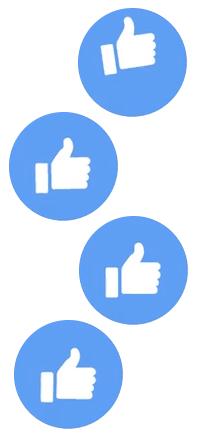
Like
The like button is the engine of Facebook and its most recognized symbol. A giant version of it adorns the entrance to the company’s campus in Menlo Park, Calif. Facebook’s 1.6 billion users click on it more than 6 billion times a day—more frequently than people conduct searches on Google—which affects billions of advertising dollars each quarter.
Changing the button is like Coca-Cola messing with its secret recipe.
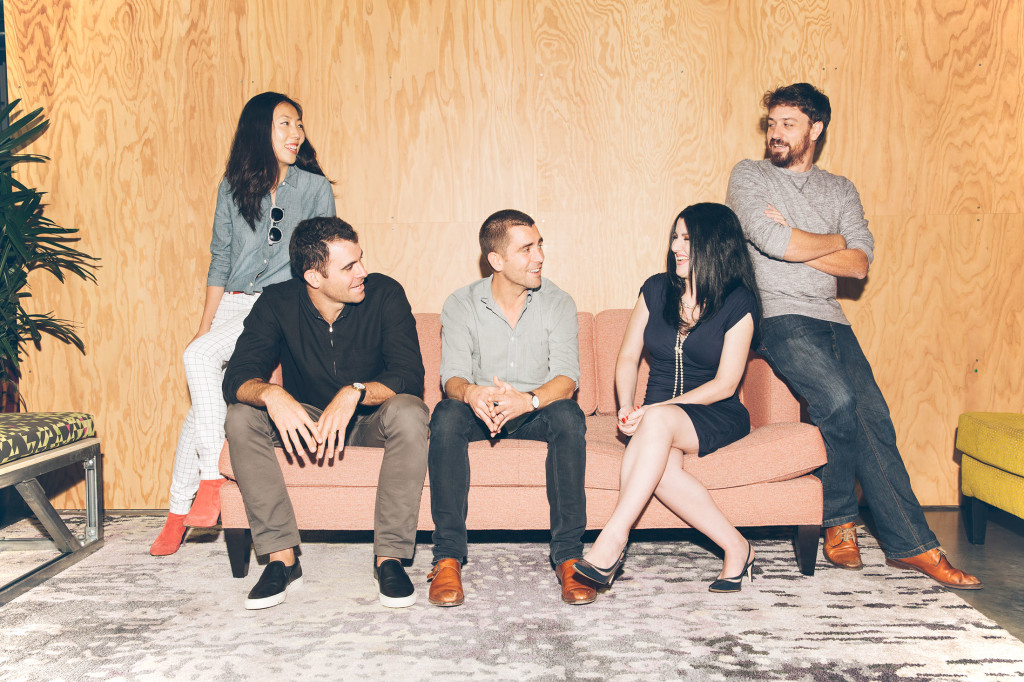 Team Cox: Julie Zhuo, Adam Mosseri, Cox, Fidji Simo, and Will Cathcart.
Team Cox: Julie Zhuo, Adam Mosseri, Cox, Fidji Simo, and Will Cathcart.
Image: Facebook
NEW EMOJI’S
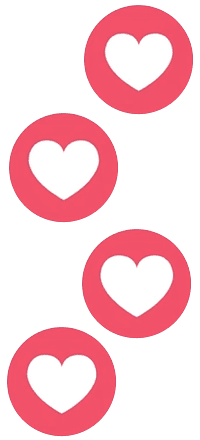
LOVE

SAD

WOW
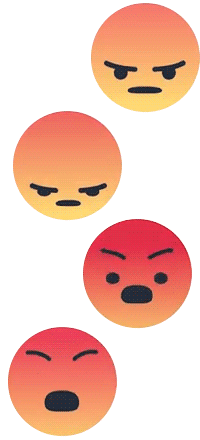
ANGRY
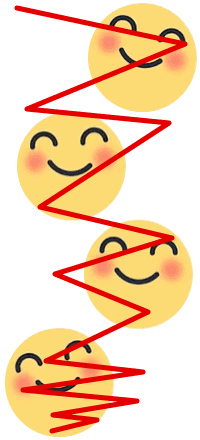
REJECTED YAY
HOW IT WORKS
Facebook Reactions won’t get rid of like—it will be an extension.
Facebook researchers started the project by compiling the most frequent responses people had to posts: “haha,” “LOL,” and “omg so funny” all went in the laughter category, for instance. Emojis with eyes that transformed into hearts, GIF animations with hearts beating out of chests, and “luv u” went in the love category. Then they boiled those categories into six common responses, which Facebook calls Reactions: angry, sad, wow, haha, yay, and love.
Users will still see the traditional thumbs-up “Like” below posts, but if they hold the button down for a moment on mobile devices, a menu featuring the other reaction options will appear. The buttons will be animated to better convey their meaning—the angry button will grow red in rage, for example. A sixth new button, “yay,” was cut because it was not universally understood.
This update may seem trivial. All it’s doing is increasing the number of clickable responses. People already comment on posts with emojis or, in some cases, actual words. But the feature will probably make Facebook even more addictive.
Late last fall the Facebook team began testing Reactions in Spain and Ireland, then Chile, the Philippines, Portugal, and Colombia.
Reactions’ biggest test so far was during the November terrorist attacks in Paris. Users in the test countries had options other than like, and they used them. “It just felt different to use Facebook that day.
Facebook won’t give a specific date for when Reactions will be introduced in the U.S. and around the world, just that it’ll be “in the next few weeks.”
SUMMARY
In addition to giving users more forms of expression, the new buttons will help Facebook gather up more data about what types of posts people are engaging with, which could boost the quality of users’ News Feeds and help the site serve more relevant ads.
By long pressing over the bottom of a post on mobile (or hovering over it with your mouse on a desktop browser), a panel with five emoji options will pop up. A number related to how many times each emoji was selected for that specific post appears below.
How do you anticipate using the new Facebook Reactions?
JOIN US FOR OUR UPCOMING
SOCIAL MEDIA SEMINAR SERIES
- Facebook Ads – How to boost sales and leads – Jan. 28th
- YouTube & Video – How to create engaging videos that boost sales – Feb. 11th
- Visual Content for Business – How to get your business to stand out – Mar.10th
About Blair

Blair Evan Ball is a Social Media Coach and founder of Prepare1, a company that works with businesses, individuals and non-profits. He is a former executive with a Fortune 50 company, and his national division did $1Billion+ in sales annually.
Blair has written three e-books: Facebook for Business Made Easy, Facebook Pages for Business Made Easy, and WordPress Blog Setup Made Easy.
Blair also educates, trains entrepreneurs and business professionals how to amplify their brand, increase revenues, and raise more funds.
![[Study] How Will Businesses Change Their Social Media Activities 5 Golden Rules for Sharing on Social Media](https://www.prepare1.com/wp-content/uploads/2014/03/COACH-logohat-162x300.jpg) The Race is ON! | PREPARE | Get into the Game and WIN!
The Race is ON! | PREPARE | Get into the Game and WIN!

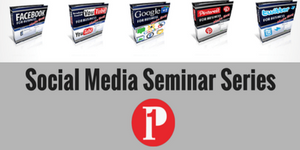



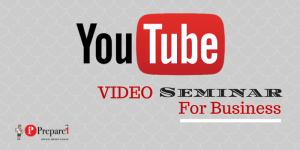
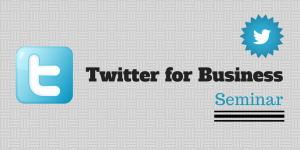
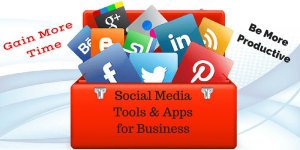
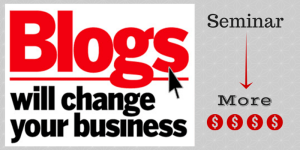
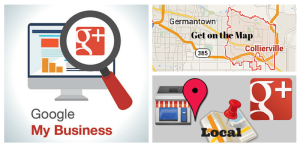

Comments on this entry are closed.